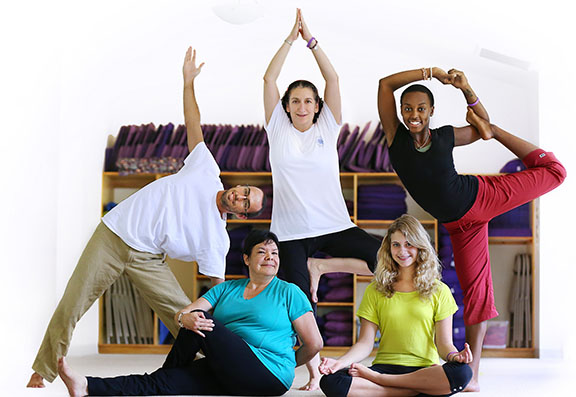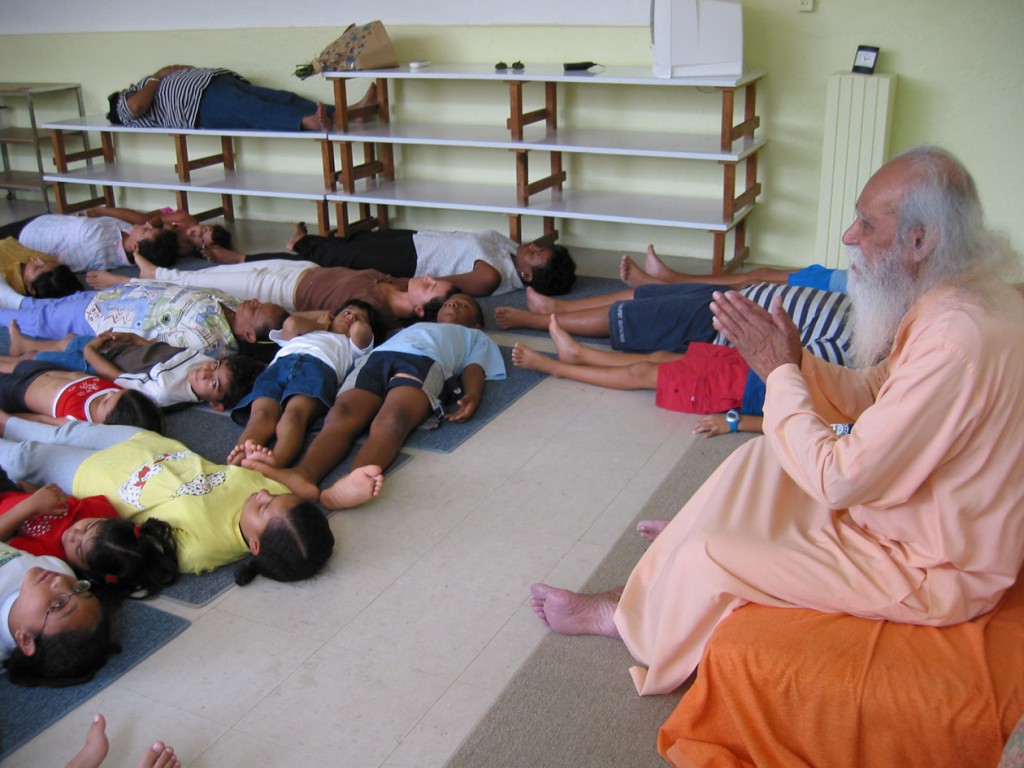 We are not our bodies. But unfortunately without the body we cannot do anything. Whatever good or bad you want to do, you need a body. You want to taste something, you need the tongue. You need to hear something, you need the ear. You want to touch something, you need the hand. If you don’t have a body, you are “no-body!” So the body is important.
We are not our bodies. But unfortunately without the body we cannot do anything. Whatever good or bad you want to do, you need a body. You want to taste something, you need the tongue. You need to hear something, you need the ear. You want to touch something, you need the hand. If you don’t have a body, you are “no-body!” So the body is important.
As an ancient South Indian saint said: “I thought the body was no good, that it was just a thing built up of bone and flesh; but later I realized that in this body God lives.” You, as the image of God, are living in that body. So the body is very important. But don’t be too attached to it. Don’t put too much emphasis on it. To have a car is good. But don’t be like an ashram treasurer we had back in Sri Lanka. On a rainy day, he would bicycle to the ashram holding an umbrella over his head. I would ask, “What happened to your car?”
“Oh, I don’t want the car to get wet,” he would say. He would put the car in his garage, cover it, and not take it out—because otherwise the car would get wet and the tires muddy! In that case, what is a car for?
The word Yoga is wrongly understood by many people all over the world. Some people think that Yoga is only a form of physical exercise for the body. On the other side, some think that physical exercise has no place in Yoga. Truly speaking, both groups are wrong. Yoga has practices to develop the physical side as well as the mental side of an individual. That is why Maharishi Patanjali, often called the “Father of Yoga,” formulated an integrated approach, which came to be called Raja Yoga or the “Royal Path.” In this approach, from which all the Yoga practiced today comes, and also known as Ashtanga or the eight-limbed path, no aspect of the individual is omitted.
That’s why we call our approach Integral Yoga. Integral means a sort of synthesis, a harmonious blending. A path that is going to be really useful to the individual should have all the various practices to help the different aspects of the individual. An individual is a mixture of physical, vital, sensual, mental, moral, intellectual and intuitional sides. An individual must be physically strong and healthy, have good control over the senses, mastery over the mind, adjustment of the emotional side and perfection in morality, sharp intelligence, a life full of dedication, and ultimately the realization and expression of one’s divinity. Or, in other words, Yoga ends in perfection, health, peace and joy—permanently. And that is why we have so many kinds of practices in Yoga.
But, the main aim of Yoga is to control the mind: Yogas chitta vritti nirodaha. Our thoughts are formed by the pranic movement or vital force. To control that, you find the closest expression of the pranic movement, the grossest expression, which is in the physical movement. So you begin by controlling the physical movement via the body. Then go to the vital movement or prana. Next, try to control the mind through the senses. And then through concentration or dharana. And, gradually meditation or dhyana. That’s the order. It’s almost like how a car starts moving. When you want the car to move, you first turn the key and it ignites the gas in the piston. Then the piston movement goes to the connecting rod. From the connecting rod it goes to the transmission, from the transmission to the rear wheel and then the car moves.
Now, suppose you want to stop the car, which movement will you control first? Where will you apply the brake? At the piston? No. The most visible expression of the movement is the wheel. You apply the brake at the wheel. And then it slowly stops everything in reverse order. The same way, the movement of the prana, though it begins with mind, has its gross expression in the physical movement of the body. So apply the brake to the physical movement. And then go to the prana, the vital movement. Then go to the senses. It is very scientific.
But another reason we work with the physical movement is because Yoga asanas or postures are also very good for keeping up the physical health and youthful vitality of the body. By proper diet, proper exercises, moderate fasting and other cleansing practices, we can always keep the body in sound health. These proper exercises are known as Yoga postures or asanas. Asanas act on the nerve centers and the glands of the body. The nerve centers are the telegraphic lines to send wave currents all over the body. If the telephone line is out of order, you can’t contact another person by phone. In the same way, if any nerve center is blocked, you can’t convey the life force to that part of the body.
The asanas work mostly on the nerve centers in the spinal column called the chakras. The postures also have their effect on the different endocrine glands. A little bit of shoulder stand, or sarvangasana, daily, will help keep the thyroid in good condition. Anybody who knows a little bit of physiology knows the importance of the thyroid gland. It regulates many aspects of our metabolism. And each posture helps regulate the functions of different organs and glands. And, of course, there are so many more advantages to the Yoga asanas and pranayama integral to the Hatha Yoga system.
So, keep the body clean. Take care of it. Use it. But don’t pamper it too much. Hatha Yoga helps you to keep the body in healthy condition and relaxed. But that’s not the Yoga itself. If that is Yoga, then why all the eight limbs of Patanjali’s Yoga? Out of the eight limbs, only one limb is asana. If you are always keen on asanas only, you are only one eighth of a Yogi. Yoga is mainly in the mind. As Patanjali says, “Chitta vritti nirodaha”—the control of the modifications of the mind is Yoga—not the control of the body is Yoga. The body is a tool. Spend enough time to take care of the tool.
Some people want to do many complicated postures to show off. What does this make you fit for? To join a circus company! But is all that necessary to keep the body in healthy condition? No. Do the asanas within the limit. In India, near Pune at Kaivalyadham [a Yoga research center], one of the founders was a doctor who gave up medicine, started practicing and then teaching Yoga. He said to do about fourteen or fifteen poses: a little backward bending, a little forward bending, a little to this side, a little that side, one upward, one downward—exact opposites. In my Hatha book I’ve given the preliminary important poses. Afterward, you might be curious and learn some others to give a little variety for the mind. But be careful not to break your bones! And remember all that is not very important. It’s just for show.
Instead, break up the vrittis in your mind. Make that mind listen to you. Controlling the mind, mastery over the mind, is important. Even through the body, you are trying to get mastery over the mind and senses. The yamas and niyamas give mastery over the mind. Asanas, working with the mind through the body, is about mastery over the mind. Pratyahara, controlling the senses, is for mastery over the mind. So that is very important. You may be an expert in doing hundreds of poses, but if you have no control over the mind, what good is it? So keep that in mind.
May the sacred science of Yoga bring us all together and make us express our divinity and find permanent happiness and peace in life. Be permanently healthy and happy. That is our birthright, given to us by God, by the Nature. We should never lose that. Only by finding the happiness and peace in us, can we help others find happiness and peace. If you find that peace and joy in you, wherever you go, you will help others find peace and joy, too.

 ~ By
~ By 